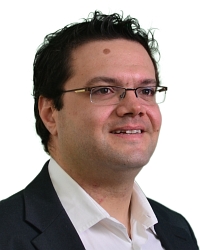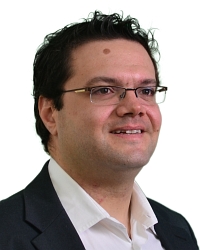TR2015-028
Coded Aperture Compressive 3-D LIDAR
-
- , "Coded Aperture Compressive 3-D LIDAR", IEEE International Conference on Acoustics, Speech, and Signal Processing (ICASSP), DOI: 10.1109/ICASSP.2015.7178153, April 2015, pp. 1166-1170.BibTeX TR2015-028 PDF
- @inproceedings{Kadambi2015apr,
- author = {Kadambi, A. and Boufounos, P.T.},
- title = {{Coded Aperture Compressive 3-D LIDAR}},
- booktitle = {IEEE International Conference on Acoustics, Speech, and Signal Processing (ICASSP)},
- year = 2015,
- pages = {1166--1170},
- month = apr,
- publisher = {IEEE},
- doi = {10.1109/ICASSP.2015.7178153},
- url = {https://www.merl.com/publications/TR2015-028}
- }
- , "Coded Aperture Compressive 3-D LIDAR", IEEE International Conference on Acoustics, Speech, and Signal Processing (ICASSP), DOI: 10.1109/ICASSP.2015.7178153, April 2015, pp. 1166-1170.
-
MERL Contact:
-
Research Areas:
Abstract:
Continuous improvement in optical sensing components, as well as recent advances in signal acquisition theory provide a great opportunity to reduce the cost and enhance the capabilities of depth sensing systems. In this paper we propose a new depth sensing architecture that exploits a fixed coded aperture to significantly reduce the number of sensors compared to conventional systems. We further develop a modeling and reconstruction framework, based on model-based compressed sensing, which characterizes a large variety of depth sensing systems. Our experiments demonstrate that it is possible to reduce the number of sensors by more than 85%, with negligible reduction on the sensing quality.
Related News & Events
-
NEWS IEEE-NH ComSig lecture by MERL's Petros Boufounos Date: April 4, 2019
Where: Nashua Public Library, Nashua, NH
MERL Contact: Petros T. Boufounos
Research Areas: Computational Sensing, Signal ProcessingBrief MERL's Petros Boufounos gave a lecture for the IEEE-NH ComSig chapter at the Nashua Public Library as part of the IEEE Signal Processing Society Distinguished Lecturer series.
MERL's Petros Boufounos gave a lecture for the IEEE-NH ComSig chapter at the Nashua Public Library as part of the IEEE Signal Processing Society Distinguished Lecturer series.
Title: "An Inverse Problem Framework for Array Processing Systems."
Abstract: Array-based sensing systems, such as ultrasonic, radar and optical (LIDAR) are becoming increasingly important in a variety of applications, including robotics, autonomous driving, medical imaging, and virtual reality, among others. This has led to continuous improvements in sensing hardware, but also to increasing demand for theory and methods to inform the system design and improve the processing. In this talk we will discuss how recent advances in formulating and solving inverse problems, such as compressed sensing, blind deconvolution, and sparse signal modeling can be applied to significantly reduce the cost and improve the capabilities of array-based and multichannel sensing systems. We show that these systems share a common mathematical framework, which allows us to describe both the acquisition hardware and the scene being acquired. Under this framework we can exploit prior knowledge on the scene, the system, and a variety of errors that might occur, allowing for significant improvements in the reconstruction accuracy. Furthermore, we can consider the design of the system itself in the context of the inverse problem, leading to designs that are more efficient, more accurate, or less expensive, depending on the application. In the talk we will explore applications of this model to LIDAR and depth sensing, radar and distributed radar, and ultrasonic sensing. In the context of these applications, we will describe how different models can lead to improved specifications in ultrasonic systems, robustness to position and timing errors in distributed array systems, and cost reduction and new capabilities in LIDAR systems.
-
NEWS Multimedia Group researchers presented 8 papers at ICASSP 2015 Date: April 19, 2015 - April 24, 2015
Where: IEEE International Conference on Acoustics, Speech & Signal Processing (ICASSP)
MERL Contacts: Anthony Vetro; Hassan Mansour; Petros T. Boufounos; Jonathan Le RouxBrief- Multimedia Group researchers have presented 8 papers at the recent IEEE International Conference on Acoustics, Speech & Signal Processing, which was held in Brisbane, Australia from April 19-24, 2015.
